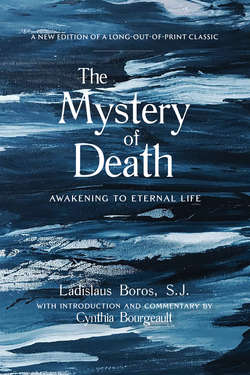The Mystery of Death

Реклама. ООО «ЛитРес», ИНН: 7719571260.
Оглавление
Ladislaus Boros. The Mystery of Death
Отрывок из книги
The Mystery of Death
Introduction
.....
I am not there, I did not die.
While this perennial piece of soul wisdom may not sit easily with those of a more traditional Christian theological formation, Boros’s argument here—which again draws heavily on Karl Rahner, but from his own angle of approach—opens a fascinating new window on this whole idea of our continued “pancosmic” participation in the world beyond death. Boros builds his case on the same basic argument we met in the preceding section: the essential (not merely “accidental”) union of soul and body during the course of one’s earthly life arises not from simple expediency, but from some inner necessity of the soul itself which is in fact constitutive of its very soulhood. “In strict Thomist theory there is a transcendental demand for a relationship with matter,” Boros surmises, adding that transcendental means “immediately ‘given’ in the very essence of the soul.” He asks: “What, then, happens to this transcendental demand in death?” (p. 73). Building on the lead handed him by Rahner, but working his scholastic terrain brilliantly to further nuance Rahner’s insight, Boros proposes that when the body dies, this primordial desire to be in relationship with materiality does not break up; it merely transfers itself to a far broader field, the pancosmos itself. Rather than being severed from matter, “We may, on the contrary, suppose that thanks to the process of death the soul is given access to a more really essential proximity to matter” (p. 74).
.....